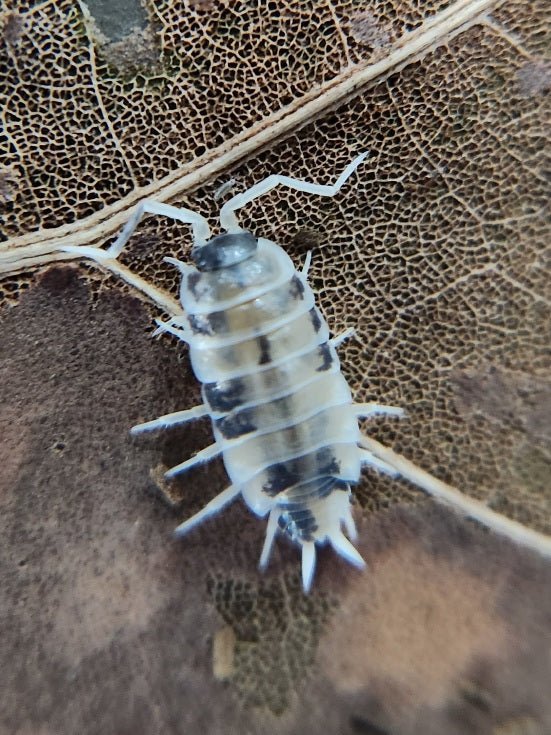About Arid Isopods
 For those relatively new to arthropods and their place in the ecology, perhaps this can provide a basic understanding of arid isopods and their ecological role.
For those relatively new to arthropods and their place in the ecology, perhaps this can provide a basic understanding of arid isopods and their ecological role.
-
What are arid isopods?
Arid isopods are small crustaceans that live in dry, desert-like environments. Unlike many isopods, which prefer damp habitats, these creatures have adapted to survive in harsh, dry conditions. -
How do arid isopods differ from other types of isopods?
Most isopods, like pill bugs or woodlice, thrive in moist areas, but arid isopods have special adaptations like waxy coatings on their exoskeletons to retain water and prevent dehydration. -
Where can arid isopods be found?
They are commonly found in desert regions across the world, including the southwestern United States, parts of Africa, and Australia. They typically live under rocks or within soil cracks to avoid extreme heat. -
What do arid isopods eat?
Arid isopods are detritivores, meaning they feed on decaying plant material, fungi, and organic matter. This helps recycle nutrients back into the soil. -
How do arid isopods retain moisture in their dry habitats?
To survive in arid environments, these isopods have specialized exoskeletons that reduce water loss. They also stay hidden during the hottest parts of the day and are mostly active at night when it's cooler. -
How do arid isopods reproduce?
Arid isopods reproduce by laying eggs, which the females carry in a brood pouch located on the underside of their body. After hatching, the young isopods look like small versions of adults but lack some developed body segments. -
Why are arid isopods important to their ecosystems?
These isopods play a crucial role in decomposing organic material, which helps break down dead plants and return nutrients to the soil. This process supports plant growth, which is important even in arid ecosystems. -
How do arid isopods protect themselves from predators?
Like many other isopods, arid species can roll into a ball, a behavior known as conglobation. This helps protect their softer undersides from predators such as birds, reptiles, and small mammals. -
What are some of the predators of arid isopods?
Arid isopods have many natural predators, including lizards, small mammals, spiders, and birds. They rely on their ability to hide and their tough exoskeletons to avoid being eaten. -
How do arid isopods impact human activities?
Although arid isopods are mostly beneficial due to their role in decomposition, they can sometimes be a minor nuisance in gardens where they might feed on seedlings or other plants. However, their benefits to soil health typically outweigh any harm.


